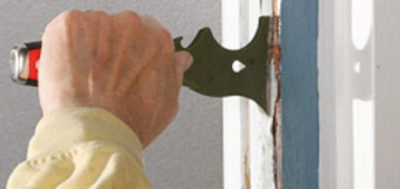

Acrylic-based glazing compounds are often used for larger gaps or cracks between the frame and glass, providing greater durability due to their enhanced weather resistance capabilities.They are also resistant to water, steam, and ultraviolet rays so that they won’t degrade over time with exposure to the elements. Silicone-based glazing compounds are the most widely used type for window glazing because they provide excellent adhesion strength and flexibility, creating a reliable seal that won’t leak.Several types of glazing compounds are available on the market, each designed for specific purposes, varying in their curing time, adhesion strength, and water-resistance properties. Binder: Typically, silica provides structure to the putty-like glaze once finished and helps it cure properly over time.Whiting: A white pigment made from clay or chalk acts as an abrasive filler material that helps to ensure adhesion between the glass and frame by helping with surface preparation.Linseed oil: Also called Flaxseed oil, it is the primary base for window glazing, providing flexibility and waterproofing qualities once cured.

The mixture is designed to adhere well to the surface it’s being applied to and should be flexible enough to expand and contract with the changing temperatures. The exact composition will vary depending on the manufacturer and type of glaze chosen for installation on a window frame. The putty is made from a combination of linseed oil, whiting, and a binder such as silica, forming a thick paste when mixed. This material can be applied with either a trowel or putty knife and must be pressed firmly into place to fill any gaps completely. The most common type of window glazing material used for this purpose is a putty-like compound called glazing putty or mastic. What is the Composition of Window Glazing Compounds? Modern window glazing products are designed using specialized technologies and advanced materials such as Low-E glass and insulating frames that provide optimal energy efficiency, noise reduction, comfort, and safety performance.
WINDOW GLAZING PUTTY ALTERNATIVES WINDOWS
Glazed windows have also been found in various archaeological digs from Europe and Asia dating back to the 15th century BC. Window glazing has been used for centuries, with examples dating back to Ancient Egypt, where slivers of quartz were applied over wooden frames with strips of papyrus or acacia wood. It also helps reduce noise levels and can increase home security by providing greater resistance to break-ins. This material protects against heat loss in winter, as well as against heat gain in summer. In window glazing, this thin layer is usually composed of transparent glass or plastic. The term originates from the glazing, which refers to coating an object with a thin material layer. Window glazing is the term used to describe the application of glass, plastic, or other transparent materials to windows to provide insulation and protect against weather conditions. caulk and learn more about how effective this can be.

Let’s delve deeper into window glazing vs. Understanding these nuances will ensure that your job is done right. We will also discuss why it is important not to use one material instead of another and why it could lead to unsatisfactory results.
WINDOW GLAZING PUTTY ALTERNATIVES HOW TO
If you cannot decide between glazing and caulk, this blog post will give you a little insight into what each is best suited for and how to use them effectively to gain perfect sealing results. Window glazing provides structural support for windows, while caulk will help form an airtight seal against the draft and water infiltration. Window glazing and caulk differ primarily in their functions, and when it comes to sealing windows, each type has pros and cons.

While the two can be used for similar purposes, the materials and techniques involved with each type of sealant differ significantly. Window glazing and caulking are two popular methods of sealing cracks and edges to make a structure more structurally sound and aesthetically pleasing.


 0 kommentar(er)
0 kommentar(er)
